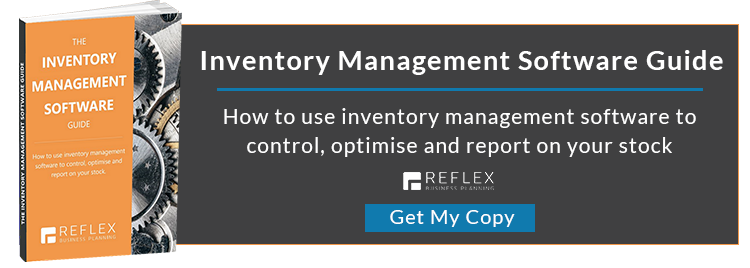Inventory management software is an excellent investment for any business looking to improve stock control, delivery times, and warehousing costs.
When integrated with other business software, such as demand forecasting and product development, it can help streamline the production and planning process and make it more efficient. By saving time and increasing efficiency, inventory management software also minimises errors due to user input. There are many features that you should consider when investing in an inventory management platform. Below are 5 functionalities to look for when choosing your inventory management system:
1) Inventory Optimisation
Effective inventory management software will help you keep your inventory balanced. If too much stock is on hand, the business will have to pay for unnecessary storage costs. If there isn’t enough product, this could lead to customer dissatisfaction or even missed opportunities if the customers cannot get what they want when they need it most. Inventory management software helps ensure that products are always available, so customers stay happy and come back!
2) Cost Reduction
Another feature related to inventory optimisation is cost reduction through effective purchasing and production practices. With better insight into current demand patterns generated by statistical forecasting using order history, businesses can purchase or produce only the amount needed, saving money long term.
3) Demand Forecasting
Demand forecasts are essential because of how quickly consumer trends change today. New products enter the market every day, and some may become obsolete faster than others depending upon factors like popularity and novelty value. Demand forecasting isn’t integral to inventory management, but businesses always benefit from using demand predictions to streamline their inventory management strategy.
4) Supply Chain Planning
Most modular inventory management software platforms are tailored to help businesses take control of their supply chain system, and not just the physical stock held in the warehouse. These applications work with your existing business systems to integrate forecasting, purchasing and production in order to help you better plan for future demand while reducing costs associated with over or understocking products.
When integrated into other systems like ERP, CRM (customer relationship management), and WMS (warehouse management system), inventory management platforms can make the entire process more efficient across an organisation instead of having separate processes happening in isolation. This ensures greater visibility when it comes to stock levels at each location throughout the value chain, making it easier to monitor both customer service levels as well as bottom line results.
5) Factory Scheduling
Factory scheduling is essential for manufacturing businesses, especially when it comes to planning the supply chain. Getting this process right helps minimise changeovers, which in turn leads to less wasted time and ultimately increased production capacity.
If you are not able to schedule your production itineraries effectively, then this will lead to missed opportunities through unbalanced inventory levels and wastage of resources at different stages throughout the value chain. Therefore, getting factory scheduling right can be one of the most important investments a business makes when implementing inventory management software.
Next Steps
As we have seen, optimising inventory management involves looking beyond your stock holdings to other, inter-related business processes, so there are many features to look for in an inventory management software platform. Many businesses who invest in such integrated business planning platforms soon realise the benefits, including cost reduction and increased efficiency as well as more effective forecasting and planning of supply chains. Get in touch with Reflex Planning today to arrange a free product demo of our modular forecasting system.
Image Source: Pixabay

